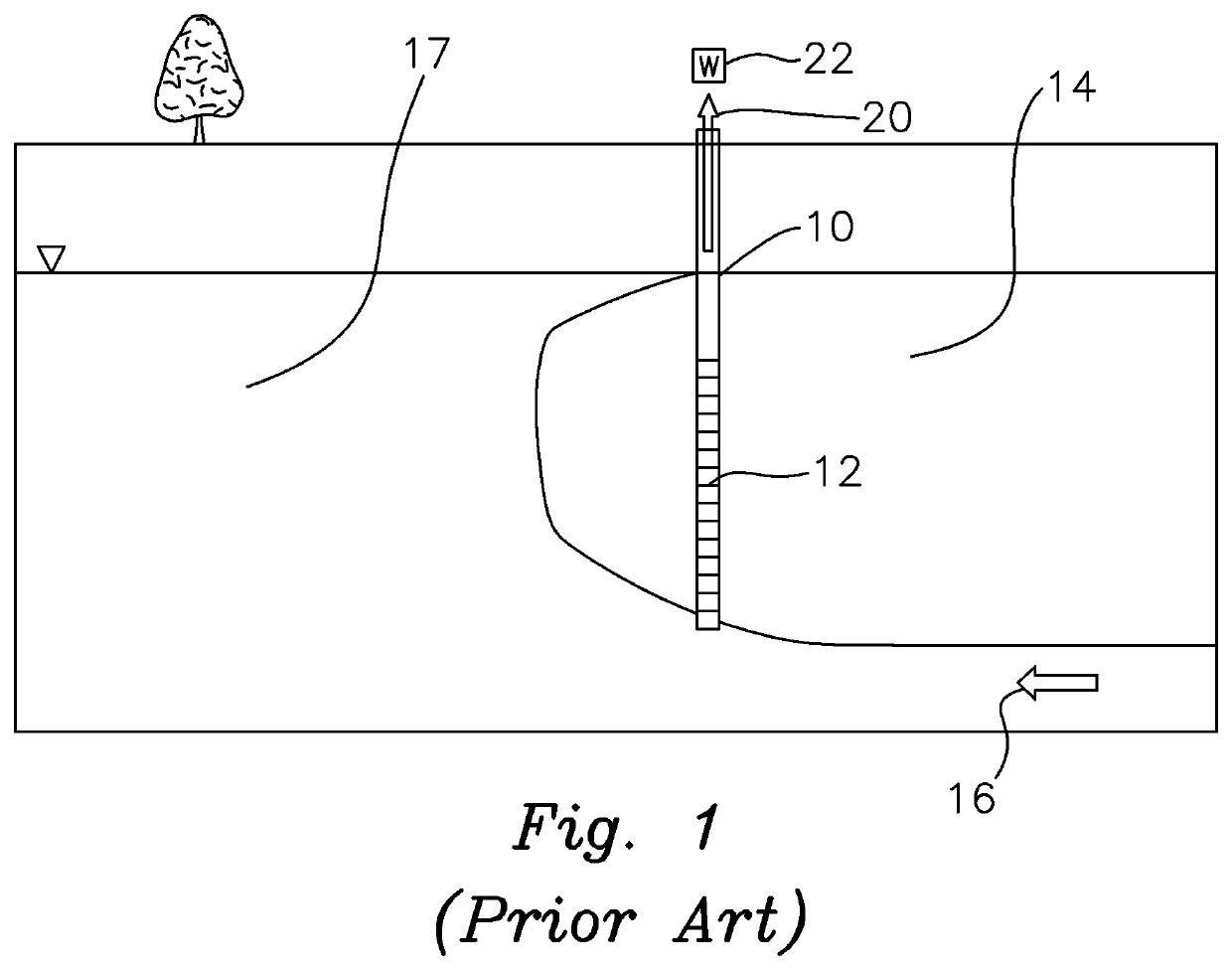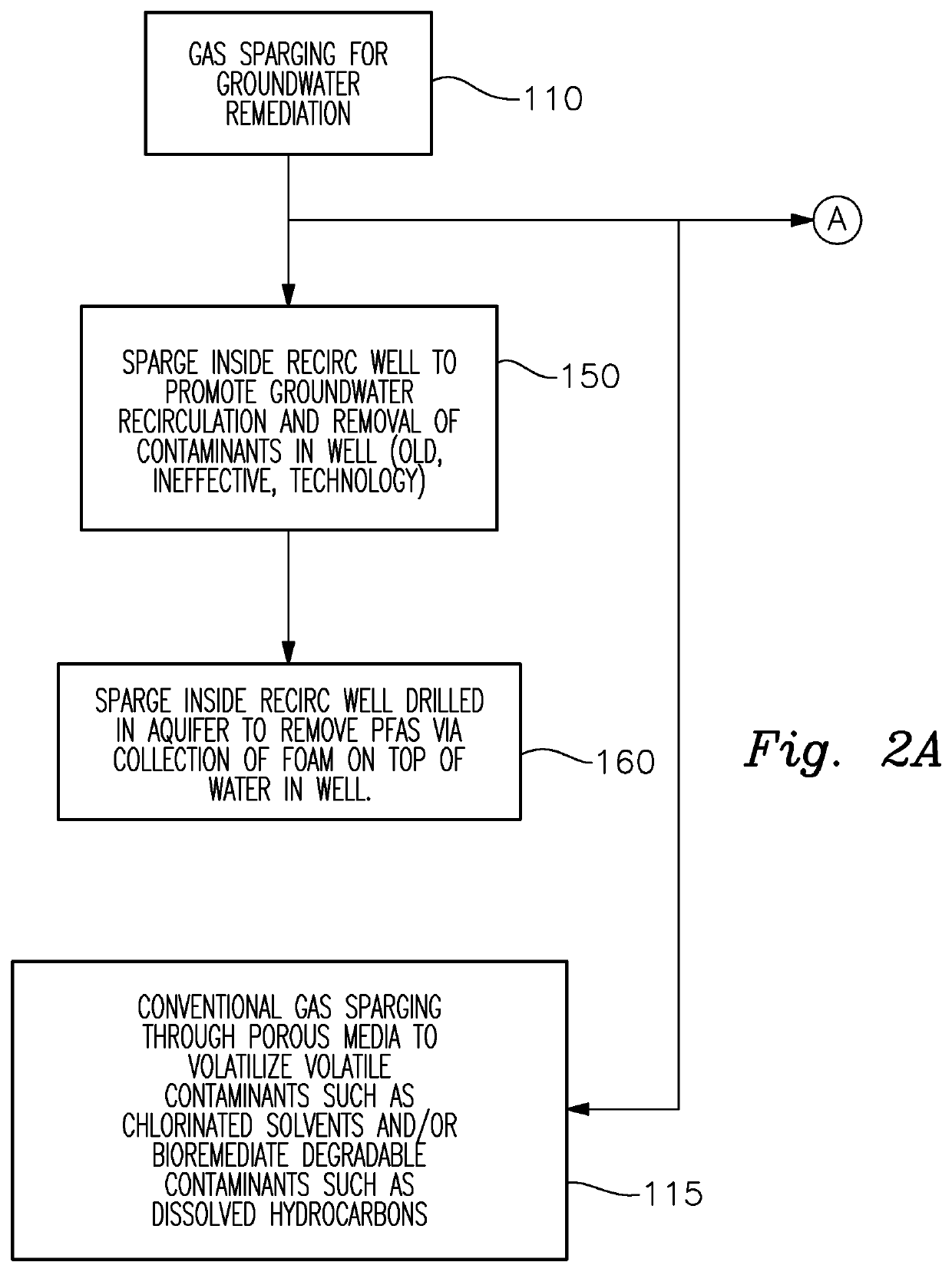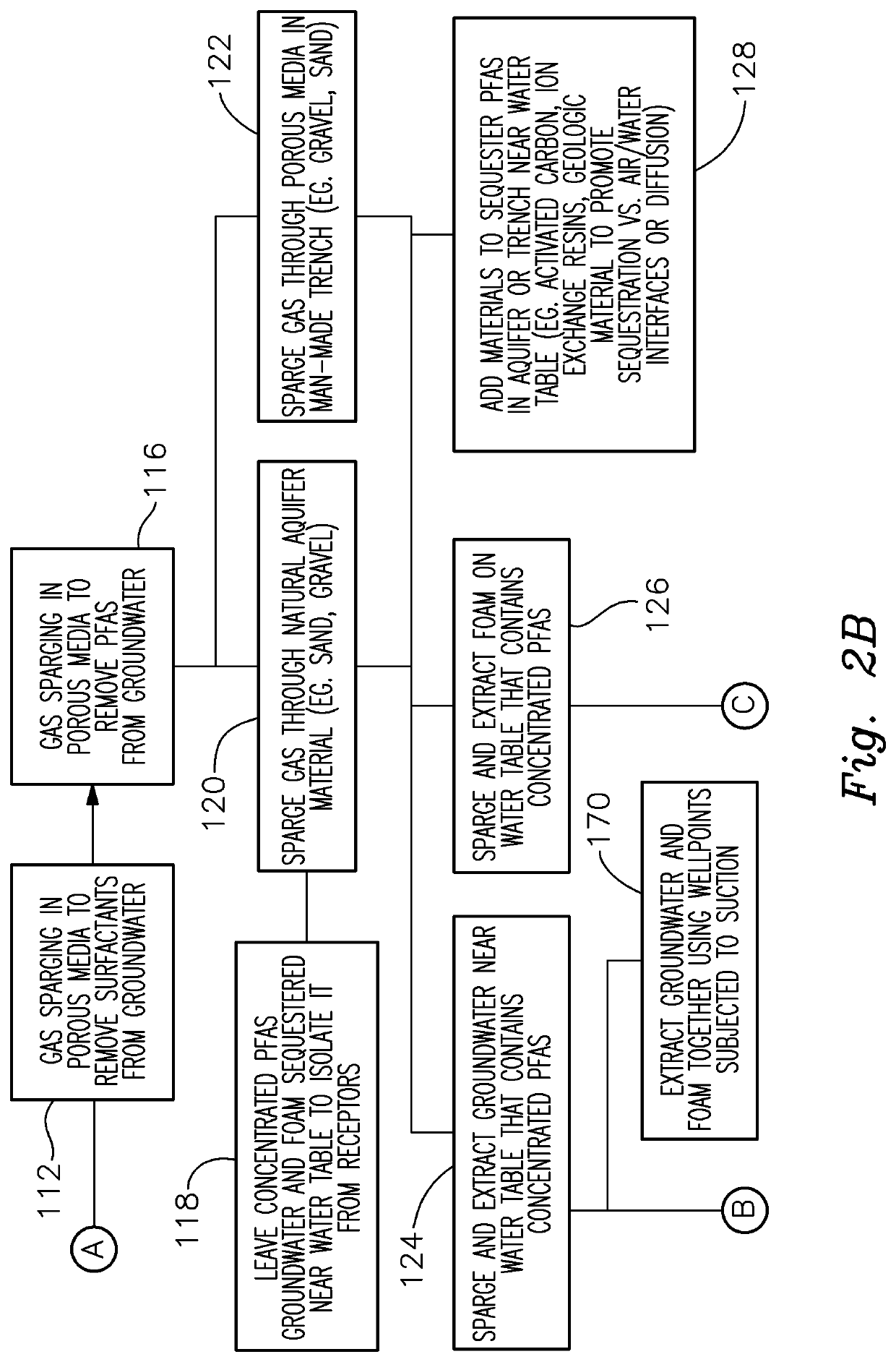Method and Apparatus for Removal of Per- and Polyfluoroalkyl Substances (PFAS) from Groundwater
a technology of polyfluoroalkyl substances and groundwater, applied in the field of groundwater remediation systems, can solve the problems of contaminated groundwater plumes, ineffective in-situ remediation techniques, and high cost of pfas source zones and plumes
- Summary
- Abstract
- Description
- Claims
- Application Information
AI Technical Summary
Benefits of technology
Problems solved by technology
Method used
Image
Examples
Embodiment Construction
:
[0039]Detailed descriptions of the preferred embodiment are provided herein. It is to be understood, however, that the present invention may be embodied in various forms. Therefore, specific details disclosed herein are not to be interpreted as limiting, but rather as a basis for later filed claims and as a representative basis for teaching one skilled in the art to employ the present invention in virtually any appropriately detailed system, structure, method or manner.
[0040]A process of a preferred embodiment is disclosed for the in-situ concentration of PFAS in groundwater to: 1) reduce the volume of contaminated plume; and / or 2) reduce the amount of contaminated groundwater that needs to be treated; 3) sequester PFAS in the subsurface for long periods to preclude their migration to receptors; and / or 4) to facilitate the removal of PFAS from the subsurface. The process relies on the in-situ sparging of a gas such as air or nitrogen into a natural or man-made porous media (e.g., s...
PUM
| Property | Measurement | Unit |
|---|---|---|
| time | aaaaa | aaaaa |
| time | aaaaa | aaaaa |
| time | aaaaa | aaaaa |
Abstract
Description
Claims
Application Information
 Login to View More
Login to View More - R&D
- Intellectual Property
- Life Sciences
- Materials
- Tech Scout
- Unparalleled Data Quality
- Higher Quality Content
- 60% Fewer Hallucinations
Browse by: Latest US Patents, China's latest patents, Technical Efficacy Thesaurus, Application Domain, Technology Topic, Popular Technical Reports.
© 2025 PatSnap. All rights reserved.Legal|Privacy policy|Modern Slavery Act Transparency Statement|Sitemap|About US| Contact US: help@patsnap.com



